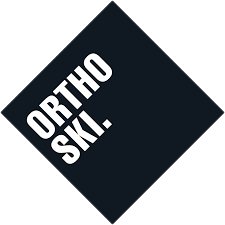Flexin’ groovin’
Flex may be the be-all and end-all of a ski boot identity, but it’s a pretty fluid concept. Check out the flex rating on your boot compared to your friends. They might have the same number but move completely differently.
Boots used to be super stiff. When we used to use 220cm long skis, the ski tip was more than a metre away. Getting your pressure to it was a tough gig. Ski technique at the time involved a whole lot more twisting than flexing. You were likely to break your leg before you bent the boot.
With shorter shaped skis and the associated change in technique, boots became a bit softer, though they were still being driven by race-boot design.
As skis evolved into something resembling the sticks we now see on shelves, boots got softer again. These days they ride a fine line between allowing you to absorb surface changes while staying centred on the shorter skis and being able to drive your weight into the tip of the ski.
In an effort to make boots more comfortable, such as the sad case of the Rossignol ‘Soft’ experiment, boots got way softer and basically just sucked. Now we’re back to boots that should offer you somewhere between 70mm to 100mm of forward knee movement once the boot is engaged.
Most skiers sit happily somewhere on the bell curve. We weigh between 50 and 100kg and most of the time we ski between 30 and 60 km/hr. Except for professionals (racers, instructors, ski patrollers) and seasoned ski bums of your flavour of choice, we all benefit from a relatively stiff ski boot. If it’s your first week ever on skis, you need a softer boot that will allow you to experience the correct ski position while skiing sedately on a beginner slope. Once you’re in control – back on the bell curve with the rest of us.
The boot can’t tell how technically gifted you are as a skier, but it does know how much you weigh and how fast you’re going. It doesn’t know that you ski like an out of control Muppet (Kermit the frog is my spiritual ski guide he’s wavy, is loud, and is totally committed) but it can tell how enthusiastic you are on your ski. I’ve got a husband who skis like Animal – yells a lot, hits anything in sight and wears a crazy look on his face – we don’t weigh the same and yet the flex of our boots are rated the same (different brands measure differently).
Getting your technique right is a combination of getting you in the correct position on the ski and getting the right message to your skis. The first step towards either of these goals is infinitely improved by having a correctly set up pair of boots. Getting the flex of the boot right for you is essential in achieving this. After that, you’re left with no excuse but to get a lesson to pass on the correct message to your ski.

